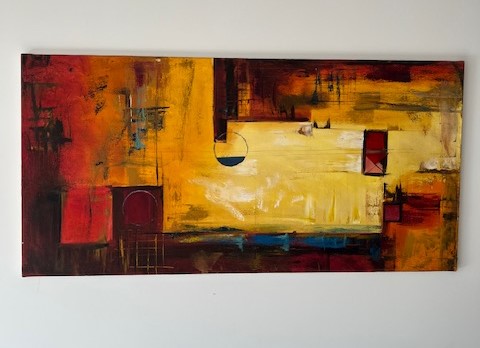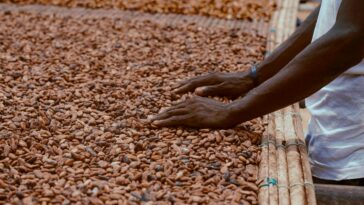Exploring the Rich World of African Art: A Celebration of Culture, History, and Expression
Africa, a continent rich in diversity, is home to a vast array of art forms that reflect the continent’s vibrant cultures, histories, and spiritual beliefs. African art is not just decorative; it is a powerful means of communication, storytelling, and preserving tradition. From the intricate beadwork of the Maasai in East Africa to the expressive masks of West Africa, African art offers a unique window into the soul of the continent, showcasing its creativity, resilience, and spiritual connection to the land.
The Diversity of African Art
African art is incredibly diverse, shaped by the continent’s vast number of ethnic groups, languages, and cultures. Every region in Africa boasts its own distinct art forms, each reflecting local traditions, spiritual beliefs, and history. Here are some key regional styles:
1. West African Art: Masks, Sculptures, and Ceremonial Art
West African art is famous for its use of masks and sculptures in cultural and religious ceremonies. The Yoruba, Dogon, and Akan people have contributed immensely to the world of African art, particularly with their wooden masks adorned with intricate patterns, beads, and feathers. These masks often represent ancestral spirits, gods, or mythical creatures, and are central to the connection between the physical and spiritual realms.
2. East African Art: Beadwork and Vibrant Textiles
In East Africa, art often takes the form of vibrant beadwork and textiles, which hold both aesthetic and cultural significance. The Maasai and Samburu are renowned for their use of beads in clothing, jewelry, and accessories, where each colour and pattern tells a story about age, marital status, or tribal affiliation. The art of beadwork is not only a form of creative expression but a symbol of identity.
3. Central and Southern African Art: Sculptures and Carvings
In Central and Southern Africa, art is closely linked with spirituality, with sculptures and carvings used to honor ancestors and gods. The Nkondi figures from Congo, often adorned with nails or sharp objects, are powerful examples of spiritual guardians. These figures serve as a connection to the divine, with the added nails believed to ward off evil spirits.
African Art as a Tool for Storytelling and Ritual
African art is not just about beauty—it is a powerful tool for storytelling and communication. In many African cultures, art plays a central role in rituals and ceremonies, such as weddings, funerals, and initiations. Masks are often used in ritual dances, where dancers wear elaborate costumes and masks to invoke spirits or honor the gods.
For example, the Gelede mask of the Yoruba people is used in ceremonies to honor mothers, elders, and maternal ancestors, emphasizing the power of women in African society. In Mali, the Bamana people use Bogolanfini (mud cloth) to tell stories and document historical events, merging the tradition of textile art with oral history.
The Spirituality of African Art
Spirituality is at the heart of much African art. Across the continent, art is seen as a way to connect with the divine, maintain cosmic balance, and honour ancestors. For instance, Dogon art from Mali reflects the people’s cosmological beliefs and their connection to the spiritual world, with sculptures, masks, and carvings embodying their deities and spirits.
African art objects, such as statues and masks, are often believed to house spiritual energy. Through these artworks, African communities maintain harmony between the physical and spiritual realms, ensuring the health and well-being of the community.
The Global Influence of African Art
While African art has deep roots in the continent’s cultures, it has also made a significant impact on the global art scene. During the early 20th century, African art became a major influence on Western artists such as Pablo Picasso and Amedeo Modigliani, who were inspired by African masks and sculptures. This influence is seen in movements like Cubism and Surrealism, where African aesthetic principles were integrated into new styles of modern art.
Today, contemporary African artists like El Anatsui, Yinka Shonibare, and Wangechi Mutu continue to challenge global perceptions of African art, blending traditional themes with modern techniques to address global issues such as identity, colonialism, and migration.
Preserving and Celebrating African Art
As Africa continues to modernize, it’s crucial to preserve and celebrate its art forms. Many African nations have established museums and cultural centres dedicated to African art, including the National Museum of African Art in Washington, D.C., and the Musée Dapper in Paris. These institutions play a vital role in safeguarding Africa’s artistic heritage.
Moreover, African artists are continuing to thrive through local craft markets, galleries, and digital art platforms, where both traditional and contemporary African art is being celebrated and shared with the world. The rise of African fashion, street art, and digital art has opened new avenues for African artists to express their stories and cultures in innovative ways.
Conclusion
African art is a window into the continent’s diverse cultures, histories, and spiritual beliefs. It’s incredible diversity, from the intricate beadwork of East Africa to the powerful sculptures of West and Central Africa, reveals the deep connection between art, tradition, and the divine. African art has not only shaped the cultural fabric of the continent but has also influenced the global art scene. By preserving and celebrating African art, we honor both Africa’s past and its ongoing contributions to the world of art and culture.



